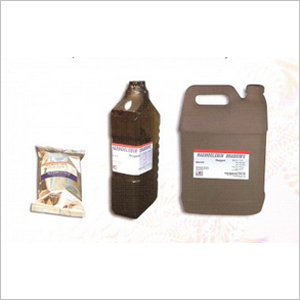Call : 08045813979
Call : 08045813979
Haemoglobin Std (Cynmeth)
Product Details:
X
Haemoglobin Std (Cynmeth) Price And Quantity
- 1000 Piece
Haemoglobin Std (Cynmeth) Trade Information
- 5000 Piece Per Week
- 4-12 Days
Product Description
Haemoglobin (Hb) Std (Cyanmethemoglobin method) is a laboratory test used to measure the amount of hemoglobin in a patient's blood. Hemoglobin is a protein found in red blood cells that carries oxygen from the lungs to the rest of the body. Measuring hemoglobin levels is an important part of diagnosing and managing a variety of medical conditions, such as anemia, blood loss, or certain types of cancer.
The Cyanmethemoglobin method is a widely used method for measuring hemoglobin levels. It involves mixing a sample of the patient's blood with a solution containing potassium ferricyanide and potassium cyanide, which converts the hemoglobin in the blood to a stable compound called cyanmethemoglobin. The solution is then analyzed spectrophotometrically to determine the concentration of hemoglobin in the blood.
The results of the Hb Std (Cyanmethemoglobin method) test are reported in grams per deciliter (g/dL) of blood. Normal hemoglobin levels vary depending on age, sex, and other factors, but generally fall within the range of 12 to 16 g/dL for women and 13.5 to 17.5 g/dL for men.
Abnormal hemoglobin levels can indicate a variety of medical conditions, including anemia, iron deficiency, blood loss, kidney disease, and certain types of cancer. In some cases, additional diagnostic tests may be required to determine the underlying cause of abnormal hemoglobin levels.
Overall, the Hb Std (Cyanmethemoglobin method) test is a simple, reliable, and widely used method for measuring hemoglobin levels in the blood. It plays an important role in the diagnosis and management of a variety of medical conditions, and is a key tool in the practice of modern medicine.
Enter Buying Requirement Details
"We are mainly looking for Bulk Order Inquiries"
 |
BIO LAB DIAGNOSTICS INDIA PRIVATE LIMITED
All Rights Reserved.(Terms of Use) Developed and Managed by Infocom Network Private Limited. |

 Send Inquiry
Send Inquiry English
English Spanish
Spanish French
French German
German Italian
Italian Chinese (Simplified)
Chinese (Simplified) Japanese
Japanese Korean
Korean Arabic
Arabic Portuguese
Portuguese